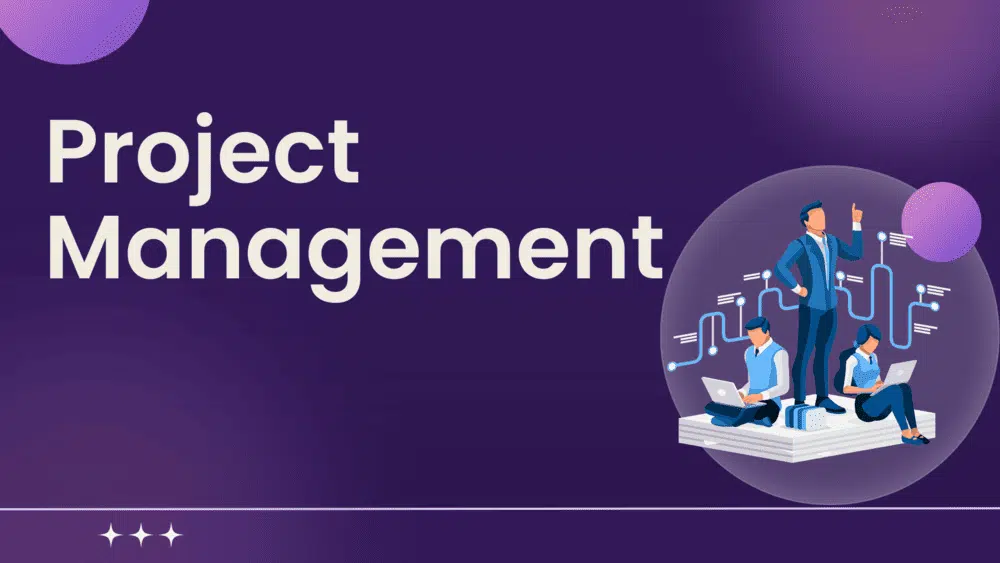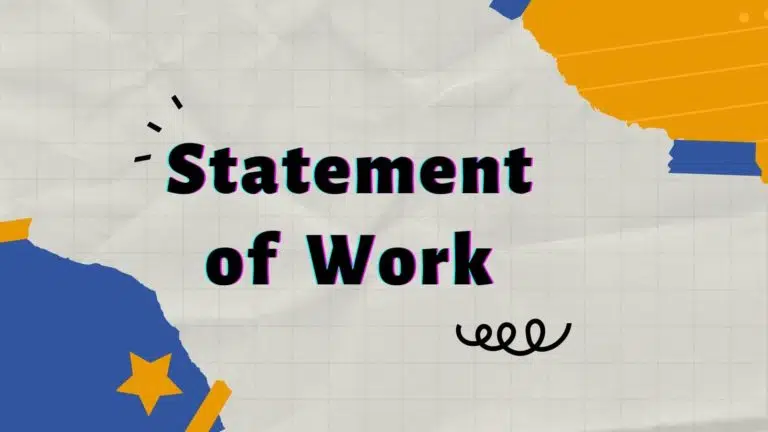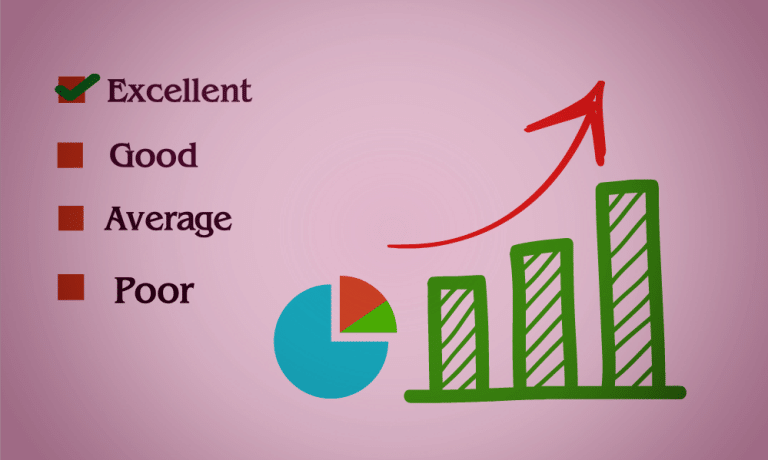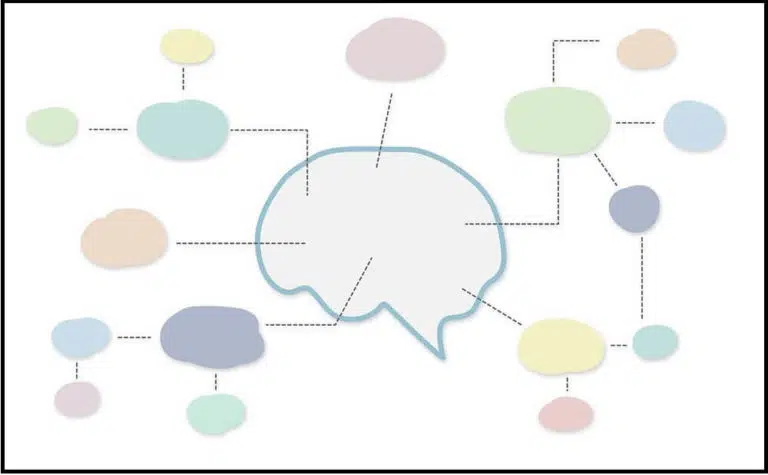Project management is the key to helping organizations achieve their long-term goals. It helps businesses use their resources efficiently, plan effective communication, and coordinate team members to achieve success and increase competitiveness.
Effective project management saves costs, reduces the chances of being behind schedule, and increases the chances of project success with the least hassle. The International Journal of Project Management states that effective project management can result in an average of 15% cost savings, thus demonstrating the financial benefits of implementing project management practices.
In this blog post, we will discuss project management in detail, but before that, let us understand the project.
What is a Project?
According to the PMBOK Guide, a project is a “temporary endeavor to create a unique product, service, or result.“
Projects are undertaken to develop a product, service, or result. The project deliverables can be tangible or non-tangible. Projects are temporary; the project will end once the project manager delivers the deliverables to project sponsors.
Organizations need projects to grow and expand their business operations, sales, and brand recognition. They are a lifeline for businesses.
Projects help us turn ideas into reality. Whether building a bridge, launching a new app, or developing a new medicine, projects ensure businesses stay focused and get things done.
What is Project Management?
According to the PMI, “Project management is the practice of using knowledge, skills, tools, and techniques to complete a series of tasks to deliver value and achieve a desired outcome.”
To complete the project, project managers need a team with the required project management skills, methodologies, funding, and authority to execute and complete the project.
Before we delve deeper into project management, let’s go through the brief history of project management.
The history of project management can be traced back to the construction of monumental structures (e.g., the pyramids in ancient Egypt, the Taj Mahal, etc.).
The formalization of project management methodologies began in the mid-20th century. In the 1950s and 1960s, project management gained prominence, with the eminence of the Critical Path Method (CPM) and Program Evaluation and Review Technique (PERT) during large-scale defense projects.
The 1969 moon landing is a notable example of successful project management, where NASA used these techniques.
In 1969, the Project Management Institute (PMI) was founded, thus becoming a pivotal organization for promoting project-management practices. Over the years, PMI has been crucial in standardizing project-management methodologies and certifications.
The Importance of Project Management
Project management is important for completing an endeavor, as it provides a structured framework for planning, executing, and controlling resources and activities to achieve intended goals.
Project management helps define project objectives. It ensures project stakeholders understand the project objectives.
Project managers can allocate resources effectively, prevent waste, and ensure project goals are achieved. A PMI study found that organizations with strong project-management practices are 28% more likely to achieve their strategic goals.
Stakeholder satisfaction is another key advantage of project management. Project managers engage with stakeholders to understand their expectations and requirements. Throughout the project life cycle, the project manager engaged with stakeholders to ensure they were satisfied with the project’s progress and that their requirements were met.
What Are the Five Phases of Project Management?
According to the PMBOK Guide, a project has to go through five phases of project management during its life cycle.
These phases are:
- Initiation
- Planning
- Executing
- Monitoring & Controlling
- Closing
1. Project Initiation Phase
This phase has two key processes: developing a project charter and identifying stakeholders.
The project charter defines the project, appoints a project manager, and gives the project manager authority, funding, and support to execute and complete the project.
After the project charter is signed, the project manager will identify the stakeholders. This is the key step, as in the next phase, the project manager will collect project requirements from these stakeholders.
Business analysts and top management perform feasibility studies and business case analysis; these processes are not part of project management. The project manager has no role in it because the project charter has not yet been signed, and no project manager has been appointed yet.
2. Project Planning Phase
In this phase, you will develop a detailed project management plan.
First, you will collect the project and product requirements from the stakeholders, which will be the basis of your project planning. Afterward, you will develop the project management plan with your team members.
The project plan has detailed steps for each activity and includes performance measurement baselines.
It consists of many subsidiary plans, such as:
- Requirement Management Plan: This describes how project requirements will be identified, documented, and managed throughout the project lifecycle.
- Scope Management Plan: This outlines how the project scope will be defined, verified, and controlled to ensure that it stays within its boundaries.
- Schedule Management Plan: This details how project schedules will be developed, monitored, and adjusted to meet deadlines and milestones.
- Cost Management Plan: This specifies how project costs will be estimated, budgeted, and controlled to meet financial objectives.
- Quality Management Plan: This defines the processes and standards for maintaining and improving the quality of project deliverables.
- Procurement Management Plan: This outlines how external goods and services will be acquired (e.g., vendor selection, contracts, and procurement processes).
- Communication Management Plan: This describes how project information will be communicated (e.g., stakeholders, frequency, and communication methods).
- Risk Management Plan: This identifies and addresses potential project risks by outlining strategies for risk assessment, mitigation, and contingency planning.
- Resource Management Plan: This details how project resources (e.g., personnel, equipment, and materials) will be acquired, allocated, and used.
- Stakeholder Engagement Plan: This defines how stakeholders will be identified, analyzed, and engaged throughout the project lifecycle to address their expectations and needs.
3. Project Execution Phase
This is where you will spend most of your budget and duration. You will execute your project plan as defined. You will recruit team members, have a kickoff meeting, and start the project work.
You will continuously help team members build the deliverable and ensure the project achieves its milestones.
You will collect work performance data to prepare project reports.
4. Project Monitor & Control Phase
This phase occurs parallel to other phases. You will monitor and control the project’s progress throughout the project lifecycle. If any deviation occurs, you will take necessary corrective and preventive actions.
Here, you carry out all project control activities such as scope control, cost control, schedule control, risk control, etc.
You will create status, progress, and performance reports and communicate them to project stakeholders so they know the project’s health and can take action to bring the project back on track if needed.
5. Project Closure Phase
This is the last phase of the project. Here, you will deliver the project deliverable to the client or project sponsor. After the client accepts the deliverable, you will update the lessons learned, project documents, and other organizational process assets and archive them.
At last, you will release the team.
Project Management Methodologies & Frameworks
Project management methodologies are structured approaches and/or frameworks to plan, execute, and complete projects. These methodologies provide guidelines, processes, and practices to ensure that projects are managed efficiently and successfully.
You can group these project methodologies into three categories:
1. Waterfall Methodology
The Waterfall methodology is a sequential project management approach with five linear phases. It begins with planning, executing, monitoring & controlling, and then closing, with each phase building upon completing the previous one. Waterfall methodology has a rigid nature as the requirements are well defined at the beginning of the project.
Though it offers clarity in milestones and a predictable timeline, it lacks the flexibility to accommodate changes once the project has started. Waterfall methodology is suitable for projects with stable and defined requirements.
2. Agile Methodology
Agile methodology is an iterative and incremental approach to project management, emphasizing flexibility, collaboration, and customer feedback. Agile frameworks divide projects into small, manageable units called sprints, which last two to four weeks, during which cross-functional teams work on prioritized tasks.
Agile promotes adaptive planning, continuous improvement, and delivering a minimum viable product (MVP) quickly. Agile is suited for projects with evolving requirements, adopting a responsive and customer-centric environment. Its strengths lie in adaptation to change, enhanced team collaboration, and delivering value incrementally.
3. Hybrid Methodology
Hybrid project-management methodologies combine elements of traditional and Agile approaches, thus offering a tailored solution to accommodate diverse project needs.
Hybrid methodologies are adaptable; they help project teams leverage the structure and predictability of traditional methods and the responsiveness and collaboration aspects of Agile. This approach is useful for projects where some aspects are well-defined, but others require flexibility and continuous adjustment.
Hybrid methodologies balance stability and adaptability, catering to various project types and ensuring that teams can effectively manage change while meeting project objectives.
Tools & Techniques in Project Management
Project management has many tools and techniques; discussing them in one article is impossible. So, here I will provide a few key tools and techniques useful for each project management phase.
Also, some techniques are common in many phases, such as brainstorming, PMIS, so I will mention them only once.
Initiation Phase
The following techniques are useful for this phase:
- Focus Group: This facilitates group discussions with project stakeholders to gather qualitative insights and opinions, thus promoting collaboration and capturing diverse perspectives for better decision making.
- Interpersonal and Team Skills: These emphasize effective communication, conflict resolution, and motivational strategies to enhance teamwork and collaboration among project members, thus ensuring a cohesive, high-performing group dynamic.
- Data Analysis: This involves the systematic examination and interpretation of project-related data to derive meaningful insights, thus enabling informed decision making, risk identification, and performance assessment throughout the project lifecycle.
- Stakeholder Mapping: This identifies and categorizes project stakeholders based on their influence and interest, thus visually representing their relationships with the project to facilitate targeted communication and engagement strategies.
Planning Phase
A few key tools and techniques in this phase are as follows:
- Data Representation: This involves visually organizing and presenting project information using charts, graphs, and/or diagrams, thus facilitating clearer communication and understanding of complex data sets among project stakeholders.
- Context Diagram: This provides a high-level visual representation of a project’s scope, thus illustrating its interactions with external entities, systems, and/or processes to help understand the project’s context and boundaries.
- Prototype: This creates a preliminary, often simplified version of a product and/or system to demonstrate its functionalities, gather feedback, and refine requirements early in project development, thus reducing the risk of misunderstandings and ensuring alignment with stakeholders’ expectations.
- Product Analysis: This examines and defines the features, functionalities, and requirements of a project’s end product, thus ensuring a comprehensive understanding of customer needs and aligning project activities with the desired outcome.
- Estimation Techniques: This uses various methods (e.g., expert judgment, historical data analysis, analogous, bottom-up, parametric, three-point estimation, etc.) to predict the time, cost, and resource requirements of project activities.
- Decomposition: This breaks complex project tasks and/or deliverables into smaller, more manageable components (e.g., WBS), thus simplifying the planning and execution processes and enhancing control and monitoring capabilities.
- Rolling Wave Planning: This adapts project planning based on evolving information and project progress, thus allowing for detailed planning of near-term activities while maintaining flexibility to adjust plans as uncertainties are reduced or additional information becomes available.
- Gantt Charts: This is a visual representation of project tasks over time that displays the start and end dates for each activity. Gantt charts assist with scheduling, resource allocation, and tracking progress, thus offering a comprehensive overview of the project timeline.
- Critical Path Method (CPM): This is a mathematical technique used to identify the sequence of activities and determine the shortest project completion duration. CPM helps identify critical tasks, manage resources efficiently, and ensure that the project stays on schedule.
Executing Phase
A few techniques in this phase are as follows:
- Project Management Software: This comprises software tools (e.g., Microsoft Project, Jira, or Asana) that facilitate task tracking, collaboration, and communication. They also enhance project visibility, promote real-time updates, and support coordination among team members.
- Design for X: This is a strategy that incorporates considerations (e.g., reliability, sustainability, or manufacturability) during the design phase to optimize the end product, thus reducing potential issues and enhancing overall project success.
- Problem Solving: This involves systematic identification, analysis, and resolution of challenges throughout a project, thus ensuring effective decision making and continuous improvement to meet project goals.
- Communication Skills: This involves conveying information, facilitating collaboration, and addressing conflicts to foster a positive, well-informed team dynamic for successful project execution.
- Project Reporting: This involves the regular creation and distribution of comprehensive project status updates, performance metrics, and milestones to stakeholders, thus ensuring transparency, accountability, and alignment with project objectives.
- Data Gathering: This is the process of systematically collecting and compiling relevant information from various sources, thus enabling project managers to make informed decisions, identify trends, and assess progress throughout the project lifecycle.
- Quality Audits: This involves systematically examining project deliverables to ensure that they meet predefined quality standards. Quality audits help identify and rectify any deviations, thus promoting adherence to project requirements and enhancing the quality of deliverables.
Monitoring & Controlling Phase
A few tools and techniques of this phase are as follows:
- Alternative Analysis: This involves evaluating and comparing different options and/or approaches to address project challenges, thus aiding in selecting the most effective, efficient solution based on cost, risk, and feasibility.
- Cost-Benefit Analysis: This systematically assesses the anticipated benefits against the costs associated with a project, thus providing a quantitative basis for decision making, and ensuring that resources are allocated to initiatives with the highest return on investment (ROI).
- Earned Value Management (EVM): This integrates cost, schedule, and performance metrics to assess project performance, thus enabling a comprehensive understanding of project health and facilitating proactive management to ensure on-time and within-budget delivery.
- Trend Analysis: This examines historical project data to identify patterns, anticipate future developments, and assess project performance trends, thus allowing for proactive adjustments to enhance project outcomes.
- Root-Cause Analysis: This investigates and identifies the underlying factors contributing to project issues or failures, thus facilitating targeted corrective actions to address the core problems and prevent reoccurrence.
- Inspection: This involves a detailed examination of project deliverables, processes, and/or documentation to ensure compliance with standards, specifications, and quality requirements, thus preventing defects and ensuring project quality.
- Schedule-Compression Techniques: These shorten project timelines without sacrificing quality by employing methods (e.g., fast-tracking or crashing) that optimize the project schedule to meet tight deadlines and/or accommodate changes in project constraints.
- Resource Optimization: This involves the efficient allocation and use of project resources, thus ensuring that personnel, materials, and equipment are used to their maximum potential to enhance project productivity and minimize costs.
Closing Phase
The key tools and techniques in this phase are as follows:
- Document Analysis: This involves a systematic review of project documentation (e.g., requirements, reports, and/or communication records) to extract relevant information, identify patterns, and gain insights, thus aiding in decision making and project planning.
- Regression Analysis: This is a statistical technique used to analyze the relationship between dependent and independent variables in a project context, thus helping project managers identify patterns, make predictions, and understand the impact of changes on project outcomes based on historical data.
Key Roles in Project Management
Although there are many roles in project management, some of the key roles are as follows:
- Project Sponsor: This is the key stakeholder responsible for providing financial support, resources, and guidance to ensure project success.
- Project Manager: This is the individual responsible for planning, executing, and closing a project, as well as managing resources, schedules, and risks to meet project objectives within scope, time, and budget constraints.
- Project Coordinator: This is the individual who assists the project manager with administrative tasks, communication, and coordination, thus facilitating smooth project execution by ensuring that tasks align with the project plan.
- Project Expeditor: This is the individual who focuses on communicating and expediting project activities. They are a liaison between team members and management but lack the authority to make decisions or resolve conflicts.
- Project Planner: This is the individual who develops and maintains project schedules, thus ensuring that tasks are appropriately planned and resources are allocated to meet project objectives within specified timelines.
- Project Engineer: This is the professional who is responsible for the technical aspects of a project. They ensure that engineering and technical requirements are met, and they coordinate with the project team to address technical challenges.
- Developers: This is the skilled professional who is responsible for writing, testing, and maintaining code and/or software, thus implementing the project’s technical components.
- Scrum Master: This is the individual who facilitates the Scrum process in Agile development. They ensure that the team follows Agile principles, remove impediments, and enable a collaborative, productive work environment.
- Product Owner: This is the individual who represents the stakeholders and is responsible for defining and prioritizing the product features, thus ensuring that the development team delivers value that is aligned with their business goals.
- Project Team Members: These are the individuals who are assigned specific tasks within a project, thus collaborating to achieve project goals and contributing their expertise and skills to the project’s success.
What Are the Best Project-Management Certifications?
The following are the most popular certifications in the project management profession:
CAPM
The CAPM stands for “Certified Associate in Project Management,” and it is offered by the Project Management Institute (PMI). CAPM is an entry-level certification for individuals who are starting their careers in project management. It validates foundational knowledge of project-management principles, terminology, and processes.
PMP
The PMP stands for Project Management Professional; PMI also provides it. The PMP credential is a globally recognized certification designed for experienced project managers. This certification validates the candidate has advanced knowledge and skills to manage complex projects.
PMI-ACP
The PMI-ACP stands for PMI Agile Certified Practitioner, offered by PMI, and focuses on Agile methodologies and practices. It validates a professional’s knowledge and experience using Agile principles and techniques, including Scrum, Kanban, Lean, and other Agile approaches. This certification is useful for managing IT projects in dynamic and rapidly changing environments.
PRINCE2
PRINCE2 stands for “Projects in Controlled Environments.” PRINCE2 is a project-management methodology developed by the UK government and adopted globally.
It emphasizes structured project management, providing a framework for effective planning, execution, and control. PRINCE2 is process-driven and emphasizes flexibility, scalability, and adaptability to different project environments.
What Are the Key Project Management Skills?
You can categorize project management skills into “hard” and “soft” skills. Hard skills include technical and quantitative competencies (e.g., “proficient with project-management tools, budgeting, and scheduling,” or “understanding and efficiently applying project methodologies”).
Soft skills focus on interpersonal and communication abilities. Effective leadership, teamwork, and communication skills are crucial for guiding and motivating teams and ensuring smooth collaboration. Leadership stands out as a linchpin in project management, with the PMI reporting that 89% of high-performing organizations prioritize leadership skills in their project managers.
Problem-solving and critical thinking are valuable soft skills enabling project managers to navigate challenges and make informed decisions.
A balanced combination of hard and soft skills is required for project managers to handle the technical aspects of project management while promoting a positive and collaborative team environment.
Examples of Project Management
Project management is used in all industries, and its principles, practices, and methodologies apply to all fields.
Some examples of project management in different fields are as follows:
- Software Development Project: This could involve developing and launching a new mobile application.
- Construction Project: This could involve constructing a commercial building.
- Marketing Campaign: This could involve launching a new product through a marketing campaign on social media.
- Event Planning: This could involve organizing weddings.
- Product Development Project: This could involve designing and launching a new consumer product.
- Infrastructure Upgrade Project: This could involve upgrading a company’s IT infrastructure.
Project Management Vs Program Management
Project management and program management differ in scope and focus. Project management is a temporary endeavor with a specific goal involving planning, execution, and closure of individual projects.
Program management deals with a broader organizational strategy, overseeing related projects and initiatives to achieve strategic objectives. Program managers coordinate and prioritize multiple similar and related projects under a program, thus ensuring alignment with organizational goals. They focus on the interdependencies between projects, the realization of strategic benefits, and the overall program success.
While project management is task-oriented and project-specific, program management is more strategic, aiming to achieve long-term organizational objectives through the coordinated efforts of multiple similar projects.
Project Management Vs Portfolio Management
Portfolio management deals with various unrelated projects and programs, aligning them with the organization’s strategic objectives. Portfolio managers prioritize and oversee various projects and programs to optimize resource allocation, mitigate risks, and maximize the overall return on investment.
While project management is concerned with the success of individual projects, portfolio management takes a broader perspective. It aligns the entire project portfolio with organizational goals to enhance strategic decision-making and ensure the success of multiple initiatives.
Summary
Project management is the key to innovation and organizational growth. It develops new products, enhances existing products, and helps organizations grow. Project management governs every aspect of the project, from developing the project charter to building the product, service, and/or result, handing it over to the client, and ensuring that the stakeholders are satisfied and happy with the result.

I am Mohammad Fahad Usmani, B.E. PMP, PMI-RMP. I have been blogging on project management topics since 2011. To date, thousands of professionals have passed the PMP exam using my resources.







